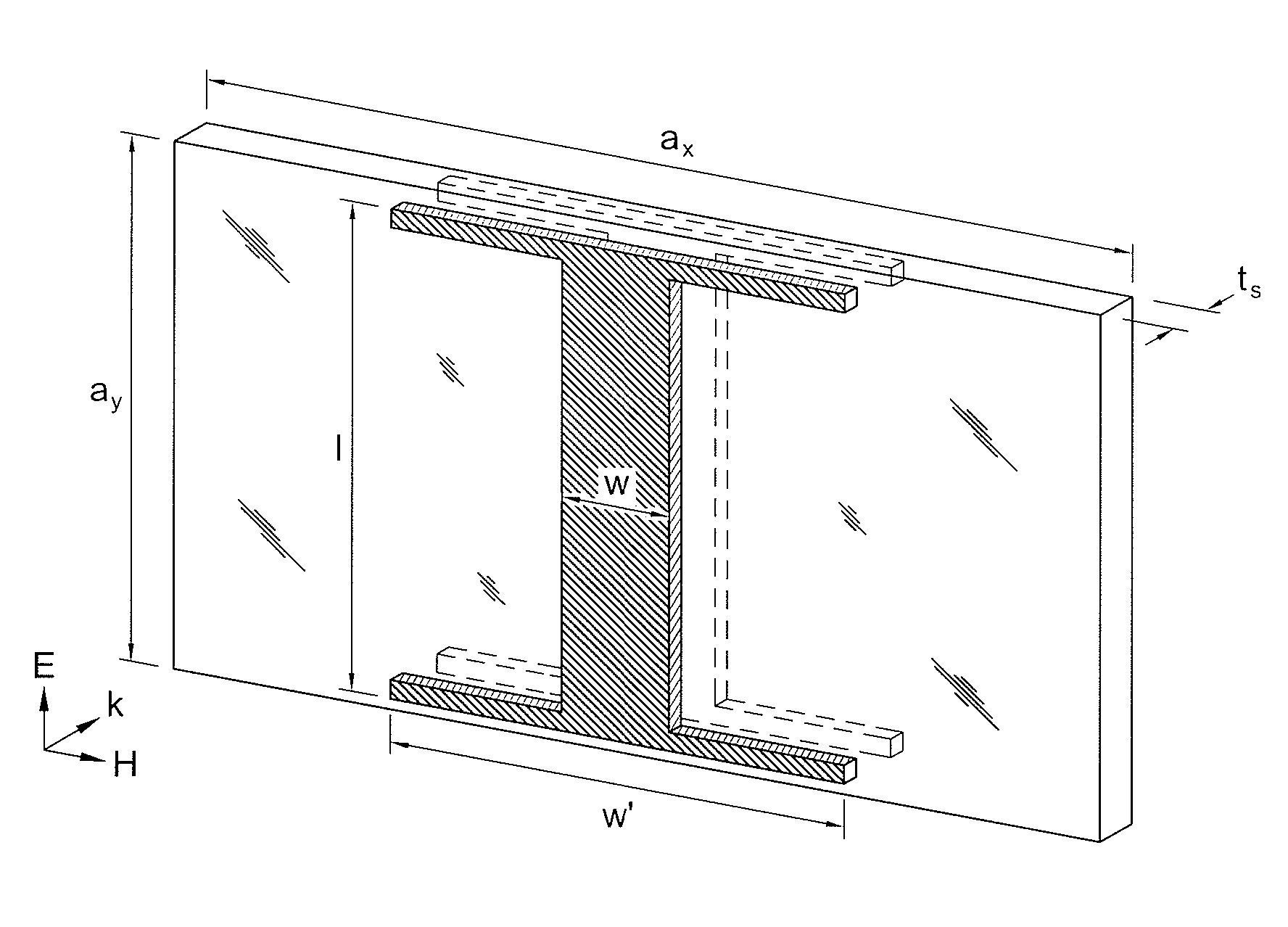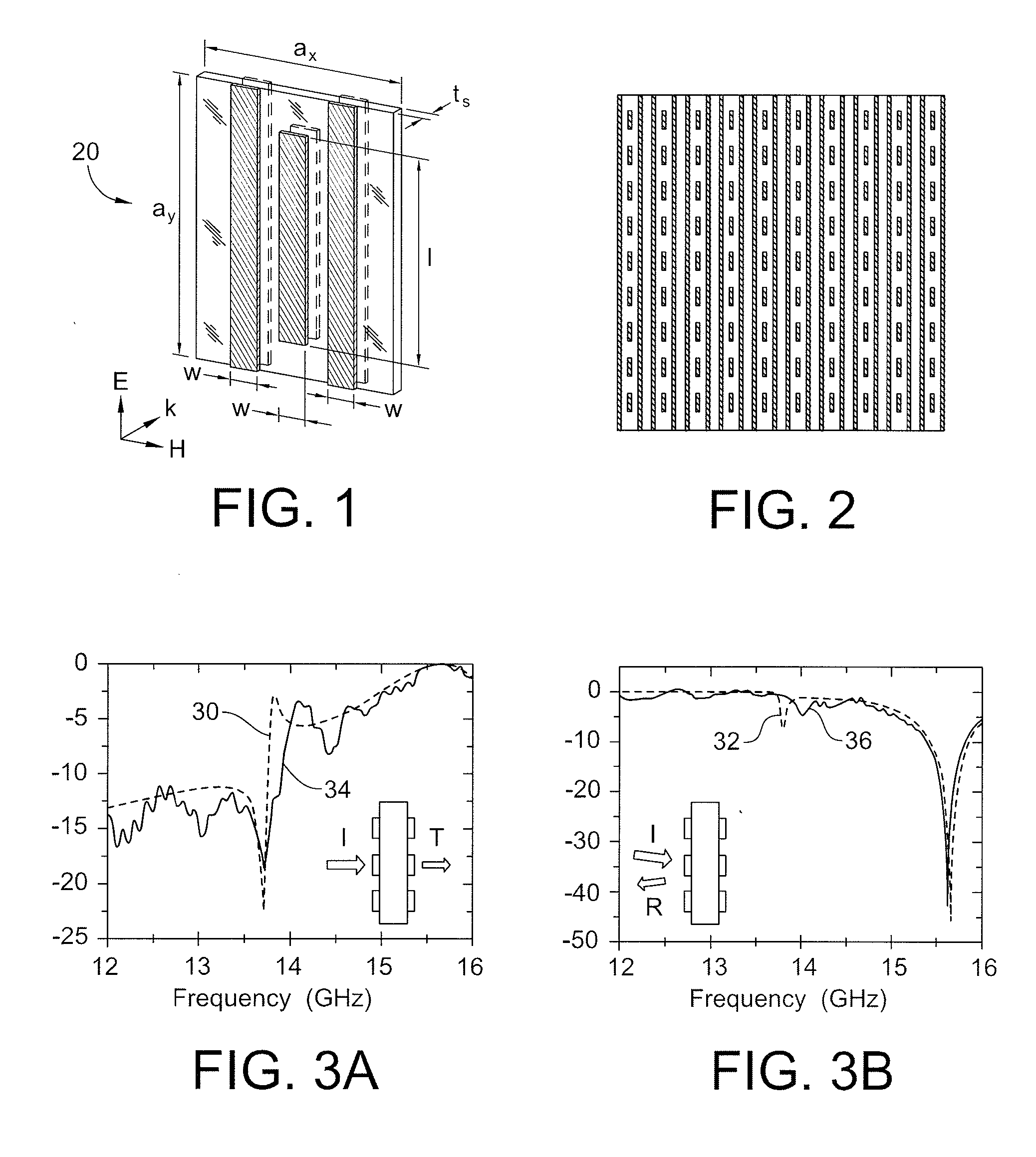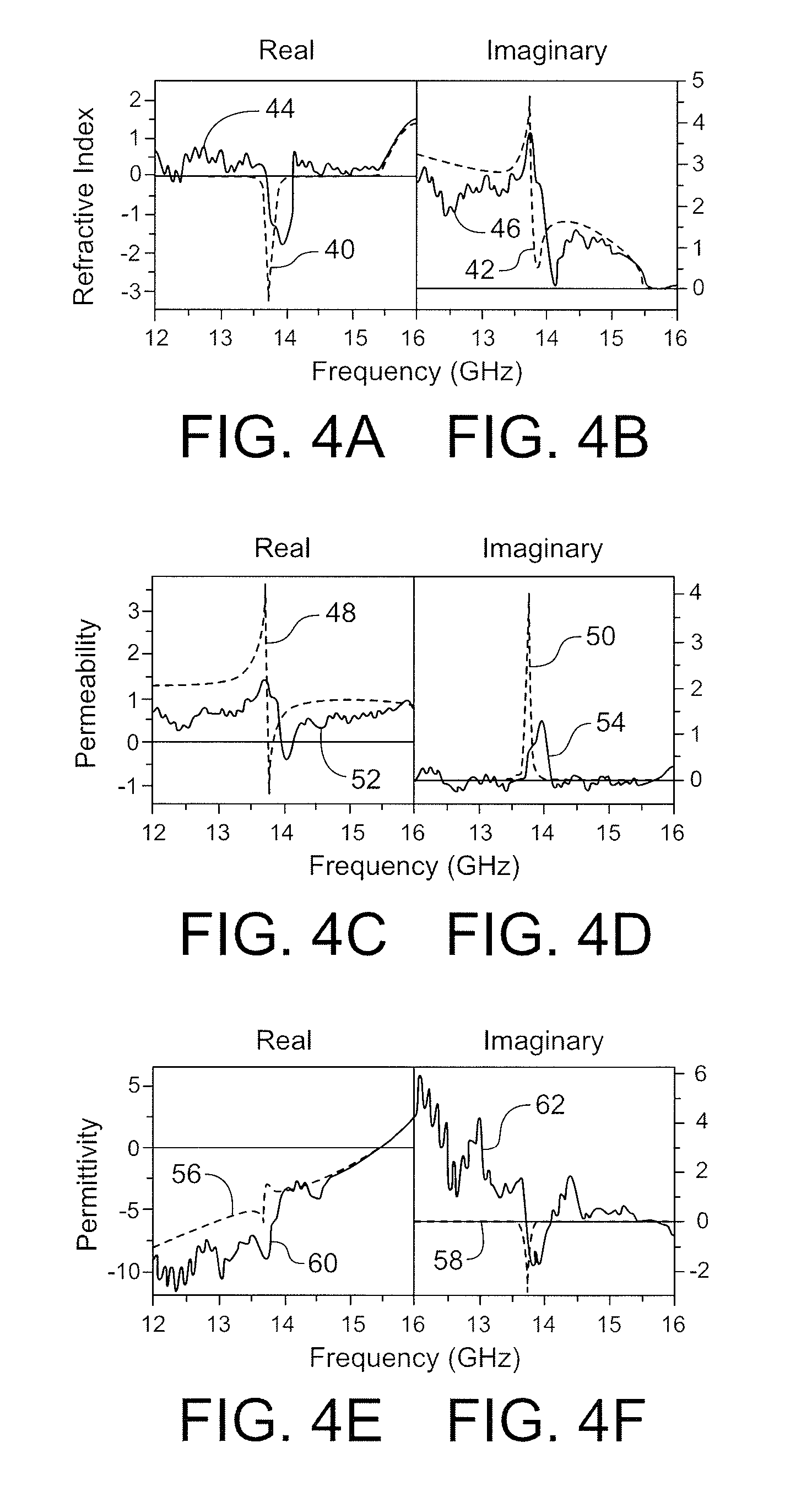Structures With Negative Index Of Refraction
a negative refraction index and structure technology, applied in the direction of instruments, optical elements, waveguide devices, etc., can solve the problems of difficult measurement, difficult to drive the magnetic permeability negative, difficult to achieve, etc., and achieve the effect of easy fabrication and experimental characterization
- Summary
- Abstract
- Description
- Claims
- Application Information
AI Technical Summary
Benefits of technology
Problems solved by technology
Method used
Image
Examples
Embodiment Construction
[0036] Designing a material structure to have an effective negative refractive index can be achieved by having simultaneously negative permeability and negative permittivity over some range of frequencies. Nearly all negative-index materials (NIMs) that have been investigated to this point have been based on the use of split-ring resonators (SRRs), which have been described in detail elsewhere and need not be described herein. Conceptually, an SRR starts with a loop of wire that provides an inductive response to an incident field. Cutting out a short section of the loop leads to a capacitive gap. The inductance (L) and capacitance (C) together form an LC-resonator, with resonance frequency ωR=1 / √{square root over (LC)}. For an electromagnetic wave incident with its wave-vector parallel to the plane of the SRR and the magnetic field perpendicular to the SRR, the response at the resonance frequency will be as if the SRR had a negative permeability. To build a negative-index material, ...
PUM
 Login to View More
Login to View More Abstract
Description
Claims
Application Information
 Login to View More
Login to View More - R&D
- Intellectual Property
- Life Sciences
- Materials
- Tech Scout
- Unparalleled Data Quality
- Higher Quality Content
- 60% Fewer Hallucinations
Browse by: Latest US Patents, China's latest patents, Technical Efficacy Thesaurus, Application Domain, Technology Topic, Popular Technical Reports.
© 2025 PatSnap. All rights reserved.Legal|Privacy policy|Modern Slavery Act Transparency Statement|Sitemap|About US| Contact US: help@patsnap.com



